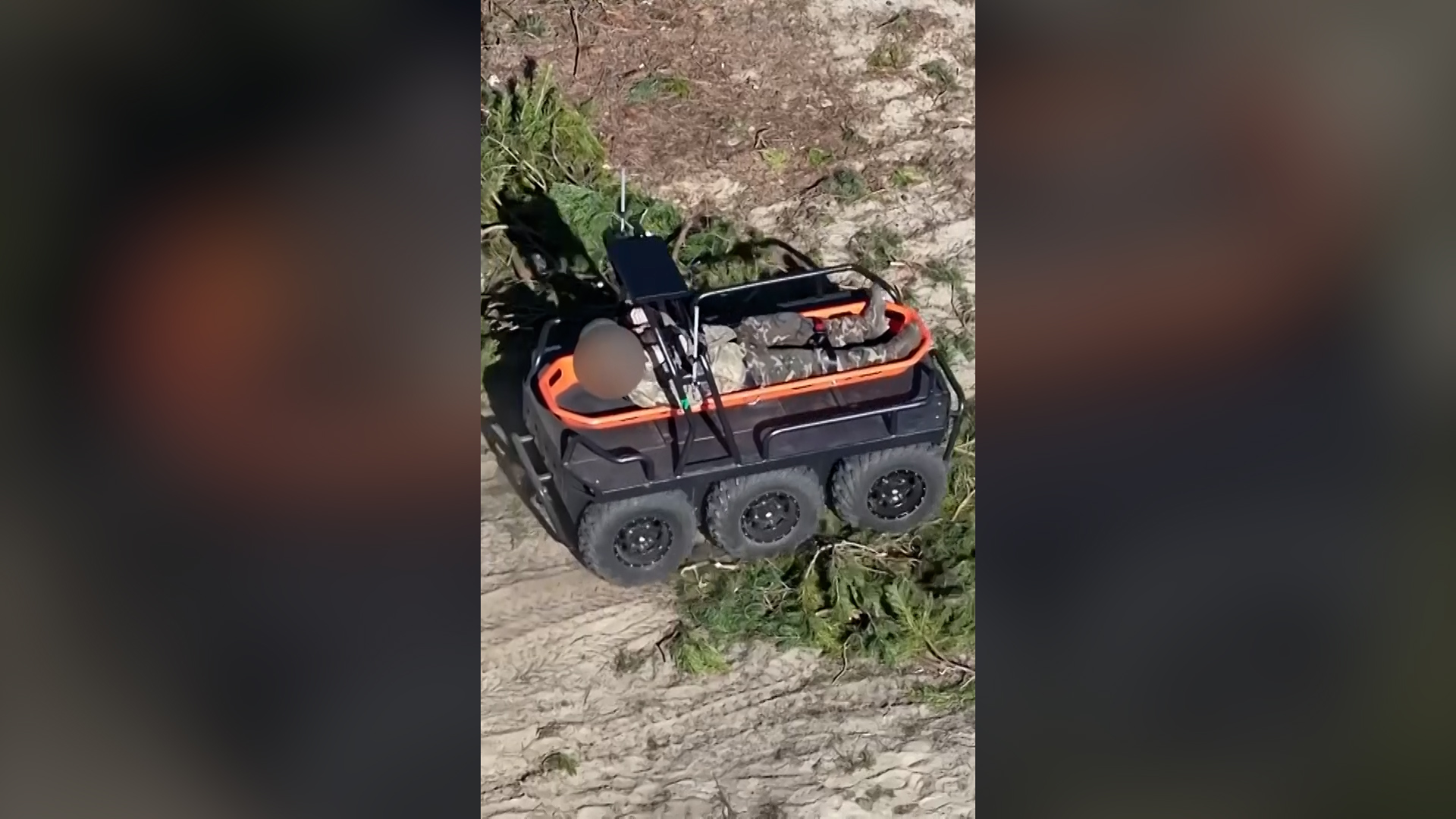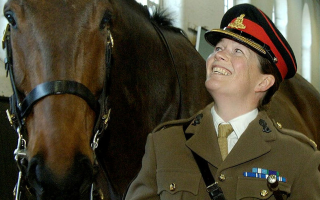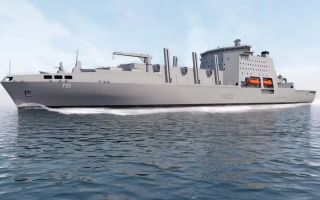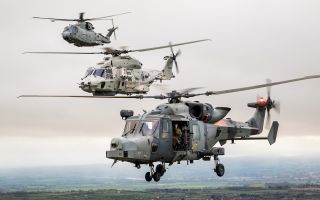Robot rescues: How drones and autonomous ground vehicles save soldiers on the frontline
If the First World War saw the rise of the tank, and the Second World War planes, Ukraine is all about drones – but they're not solely being deployed in combat. Soldiers' lives are being saved, with help from robots.
Earlier this year, three critically wounded soldiers found themselves surrounded.
Medics couldn't get in to extract them. Nor could they get themselves out.
- Ukrainian minehunters prepare for end of the war when skills can be used for real
- Defence deal struck as troops from Interflex meet Zelensky and Starmer at No 10
- Interflex turns three: How UK-led training is shaping Ukraine's defence
After a month of keeping themselves alive, they were reportedly rescued by an unmanned ground vehicle – known as the Ardal.
It was developed by Ukrainian company Burevii – under the Brave 1 initiative – a defence tech cluster that brings together developers, companies, the government, and the armed forces, to advance military technology.
The Ardal UGV is equipped with autonomous navigation, all-terrain tracks, and a payload capacity sufficient to carry a wounded soldier.
It can navigate through narrow and debris-filled areas and can transmit real-time situational awareness to operators.
In the above rescue, it reportedly travelled 17km under heavy mortar and artillery fire, to reach the casualties.
The rescue mission involved 50 soldiers and engineers, electronic warfare to suppress enemy signals, and aerial reconnaissance and drone bombers to distract the enemy.

Remote controlled stretchers
Other companies are doing similar things.
Before the invasion, Ukrainian company Ratel made street lighting but, like many others, with their country under attack, they changed focus.
They now specialise in unmanned ground vehicles capable of casualty evacuation.
They also manufacture a remote control stretcher that can travel 8km carrying a load of 150kg.
But casevac hasn't been restricted to overland.
Last year German firm Avilus introduced the Cricket, which it says is the world's first vertical take-off and landing medical evacuation drone for the battlefield.
It has a top speed of 90km/h, and the patient's vital signs can be monitored on board and transmitted to waiting medics.
Critically it also has onboard electronic warfare systems which aim to keep the drone ambulance and its patient safe.
No blood
In some cases, a casualty simply can't be extracted.
In April, Ukrainian soldiers from the 14th Chervona Kalyna Brigade saved the life of a severely wounded comrade while under relentless Russian fire near Pokrovske.
The only thing that could save the man was a blood transfusion, but they didn't have any blood and none of them were doctors. So how did they do it?
Soldiers back at base repurposed a hexacopter drone known as the Baba Yaga, which is normally used for bombing missions.
They secured a container of blood to it and flew it directly above where the men were sheltering.
It dropped the blood, and then members of the reconnaissance unit carried out a transfusion, guided by a surgeon via video link.
The patient was later evacuated to hospital and his condition was reported to be stable.
Ukraine is one of the first countries to use drones for frontline evacuations and blood deliveries.
The country reportedly plans to supply its army with 15,000 domestically built ground robotic drones by the end of this year – 10 times the number deployed in 2024.









